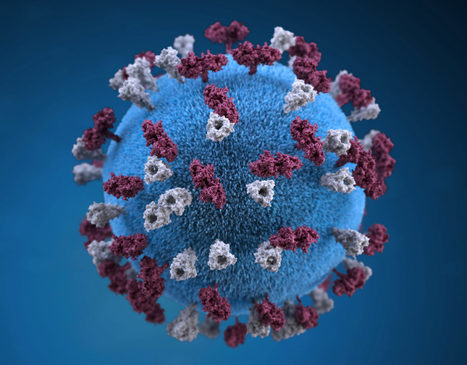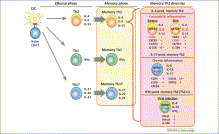Programme DPC n°50982000002
Get Started for FREE
Sign up with Facebook Sign up with X
I don't have a Facebook or a X account

 Your new post is loading... Your new post is loading...
 Your new post is loading... Your new post is loading...

Alfredo Corell's curator insight,
December 14, 2013 8:15 AM
Immunological memory is a hallmark of adaptive immunity. Memory CD4 T helper (Th) cells are central to acquired immunity, and vaccines for infectious diseases are developed based on this concept. However, memory Th cells also play a critical role in the pathogenesis of various chronic inflammatory diseases, including asthma. We refer to these populations as ‘pathogenic memory Th cells.’ Here, we review recent developments highlighting the functions and characteristics of several pathogenic memory type Th2 cell subsets in allergic inflammation. Also discussed are the similarities and differences between pathogenic memory Th2 cells and recently identified type 2 innate lymphoid cells (ILC2), focusing on cytokine production and phenotypic profiles. |

Alfredo Corell's curator insight,
October 1, 2013 5:59 PM
Both the treatment of patients with allergic diseases and the study of allergic disease mechanisms depend on a wide variety of assays that in various ways assess the presence and function of IgE antibody. The study of allergic diseases could benefit from the study of its 2 principle cellular participants, mast cells and basophils, but the basophil is more accessible than mast cells for ex vivo studies. Its functionality is tested by using 2 predominant methodologies: the secretion of mediators of allergic inflammation and the expression of proteins on the plasma membrane after stimulation. Each approach has benefits. There are also many operational details to consider regardless of which general approach is taken, and proper interpretation of the methods requires a good understanding of the reagents used and the receptors expressed on basophils and a detailed understanding of the factors regulating aggregation of cell-surface IgE. |













centré allergologie et cytométrie de flux, pas covid-19
pas covid, flow cytometry et basophiles en allergie
autres ressources sur ces pages
https://www.scoop.it/topic/from-flow-cytometry-to-cytomics?q=basophil